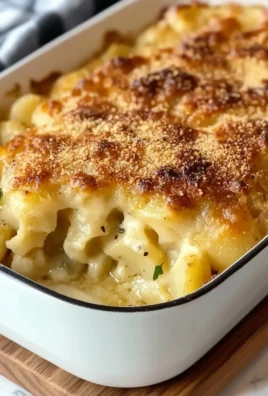Buffalo wings sauce is a game-changer in the world of sauces, elevating crispy chicken wings to a spicy, tangy, and buttery delight. Whether you’re preparing classic wings for game night, dipping fries, or drizzling it over burgers, understanding how to make the perfect Buffalo sauce is essential. This guide dives deep into everything from its history to step-by-step preparation, ingredient breakdowns, and pro tips to help you craft the ultimate Buffalo wings sauce.

Introduction to Buffalo Wings Sauce
What Is Buffalo Wings Sauce?
Buffalo sauce is a buttery, spicy, and tangy condiment primarily used for coating chicken wings. It has a smooth, velvety texture and a balanced heat that makes it irresistible. Unlike plain hot sauce, Buffalo sauce includes butter and seasonings, creating a richer, more complex flavor.
Why Is It Called Buffalo Sauce?
Despite its name, Buffalo sauce has no connection to buffaloes. It originated in Buffalo, New York, at the legendary Anchor Bar in 1964, where Teressa Bellissimo first coated fried chicken wings in a simple but flavorful hot sauce and butter mixture. Since then, Buffalo sauce has become a staple in sports bars, tailgate parties, and kitchens worldwide.
The History & Evolution of Buffalo Wings Sauce
Origins at the Anchor Bar
- In 1964, Teressa Bellissimo created Buffalo wings as a late-night snack for her son and his friends.
- The wings were deep-fried, coated in Frank’s RedHot and butter, and served with celery and blue cheese dressing.
Rise in Popularity
- Throughout the 1970s and 1980s, Buffalo wings spread across bars and restaurants in the U.S.
- The sauce became a Super Bowl favorite, leading to mass production of bottled Buffalo sauces.
- Today, Buffalo sauce is used in burgers, pizza, tacos, sandwiches, and dips.
Regional Variations
- Mild Buffalo Sauce – More butter, less hot sauce.
- Extra Spicy Buffalo Sauce – Includes cayenne and extra vinegar.
- Garlic Buffalo Sauce – Infused with roasted garlic.
- Sweet Buffalo Sauce – Honey or brown sugar for a mild kick.
Preparation Phase & Tools to Use
Essential Kitchen Tools
- Small saucepan – Ensures even heating.
- Whisk – Helps emulsify butter and hot sauce.
- Measuring spoons & cups – For accuracy.
- Heat-resistant spatula – Prevents burning.
- Mixing bowl – For additional flavor blending.
Preparation Tips
- Use high-quality butter – Unsalted is best for full control over the seasoning.
- Choose the right hot sauce – Frank’s RedHot is the most traditional, but others work too.
- Heat gently – Avoid overheating to prevent the sauce from breaking.
- Whisk constantly – Ensures a smooth, glossy consistency.
Ingredients List & Their Functions
Core Ingredients
- Hot Sauce – The base of Buffalo sauce, providing heat and tang.
- Butter – Balances the spice and creates a velvety texture.
- White Vinegar – Adds acidity to enhance the tangy flavor.
- Worcestershire Sauce – Provides a rich umami depth.
- Garlic Powder – Boosts savory notes.
- Paprika – Adds smokiness and mild sweetness.
- Cayenne Pepper – Increases heat intensity.
- Salt & Pepper – Brings out the flavors.
- Honey or Brown Sugar (Optional) – Balances heat with a hint of sweetness.
Ingredient Substitutions & Variations
- Butter Alternatives – Use ghee for a richer flavor or coconut oil for a dairy-free version.
- Mild Buffalo Sauce – Reduce hot sauce, increase butter.
- Spicy Buffalo Sauce – Add extra cayenne or use a spicier hot sauce.
- Vegan Buffalo Sauce – Replace butter with plant-based butter or olive oil.
Step-by-Step Instructions for the Perfect Buffalo Wings Sauce
Step 1: Melt the Butter
- In a small saucepan, melt the butter over low heat.
- Avoid boiling to prevent separation.
Step 2: Add the Hot Sauce
- Once the butter is fully melted, slowly pour in the hot sauce while whisking.
- Keep the heat on low to prevent the sauce from breaking.
Step 3: Mix in the Other Ingredients
- Add white vinegar, Worcestershire sauce, garlic powder, paprika, and cayenne pepper.
- Whisk continuously to combine all ingredients.
Step 4: Simmer & Adjust the Flavor
- Let the sauce simmer for 2-3 minutes on low heat.
- Taste and adjust seasoning—add honey for sweetness or extra cayenne for heat.
Step 5: Emulsify & Finish
- Remove from heat and whisk vigorously to ensure a smooth, glossy texture.
- Let it rest for a minute before using.
How to Achieve the Perfect Consistency
Preventing Sauce Separation
- Use fresh butter – Old butter may not emulsify properly.
- Low heat is key – High heat can cause separation.
- Whisk continuously – Ensures smooth blending.
Thickening Buffalo Sauce
- Simmer slightly longer for a thicker sauce.
- Add a small amount of cornstarch slurry (1 tsp cornstarch + 1 tsp water).
Adjusting the Spice Level
- For mild sauce, increase the butter-to-hot-sauce ratio.
- For extra heat, mix in more cayenne or a dash of hot chili oil.
Alternative Cooking Methods
Microwave Version
- Melt butter in a microwave-safe bowl.
- Stir in hot sauce and seasonings.
- Microwave for 15-20 seconds, whisk, and repeat until fully blended.
Slow Cooker Buffalo Sauce
- Add all ingredients to a slow cooker on low heat.
- Stir occasionally for 1-2 hours.
- Use immediately or store for later.
Best Side Dishes for Buffalo Wings
Buffalo wings shine on their own, but pairing them with the right side dishes enhances the experience. Here are some classic and creative side dishes to complement your wings.
Classic Pairings
Celery & Carrot Sticks
- A fresh and crunchy contrast to spicy wings.
- Helps balance the heat with a natural cooling effect.
Blue Cheese Dressing & Ranch Dip
- The creamy richness neutralizes the spiciness.
- Blue cheese adds a sharp, tangy note, while ranch is smooth and herby.
French Fries
- Crispy, salty fries absorb the extra Buffalo sauce.
- Ideal for dipping into blue cheese or ranch dressing.
Onion Rings
- Their crispy, slightly sweet flavor pairs well with the tangy heat of Buffalo sauce.
- Adds a satisfying crunch.
Creative Side Dishes
Mac and Cheese Bites
- Creamy, cheesy bites contrast with the spiciness of Buffalo wings.
- Can be baked or fried for extra crispiness.
Loaded Potato Skins
- Crispy potato halves topped with cheese, bacon, and sour cream.
- The richness balances the heat from the wings.
Coleslaw
- A refreshing, tangy side dish that cools the palate.
- Vinegar-based slaws complement Buffalo sauce beautifully.
Jalapeño Poppers
- For spice lovers, these add a different type of heat.
- The creamy cheese filling balances out the spice.
Nutritional Information & Health Benefits
Buffalo sauce is a flavorful addition to meals, but how does it measure up nutritionally? Here’s what you need to know about its calories, health impact, and how to make it healthier.
Caloric Breakdown
The calories in Buffalo sauce vary depending on the ingredients. A standard serving (2 tablespoons) typically contains:
- 40-100 calories (depending on the butter-to-hot-sauce ratio).
- 4-8 grams of fat, primarily from butter.
- 1-2 grams of carbohydrates if honey or sugar is added.
Health Benefits
- Capsaicin from hot sauce – Helps boost metabolism and reduces inflammation.
- Vinegar content – Aids digestion and has antimicrobial properties.
- Customizable for dietary needs – Can be made keto, gluten-free, or dairy-free.
Making It Healthier
- Use less butter or swap it for ghee or plant-based alternatives.
- Opt for low-sodium hot sauce to reduce salt intake.
- Add Greek yogurt for creaminess with fewer calories.
Common Mistakes & How to Avoid Them
Even a simple recipe like Buffalo sauce can go wrong. Here are common mistakes people make and how to fix them.
Mistake #1: Using the Wrong Butter-to-Hot-Sauce Ratio
- Too much butter? The sauce becomes greasy.
- Too much hot sauce? It lacks richness and balance.
- Fix: Start with a 50:50 ratio and adjust based on taste.
Mistake #2: Overheating the Sauce
- Butter separates when overheated, causing an oily texture.
- Fix: Keep the heat low and steady while whisking.
Mistake #3: Not Whisking Properly
- Poor emulsification leads to a grainy or separated sauce.
- Fix: Whisk continuously while adding hot sauce to melted butter.
Mistake #4: Using Low-Quality Hot Sauce
- Not all hot sauces are created equal.
- Fix: Stick to Frank’s RedHot or a quality vinegar-based hot sauce.
Mistake #5: Storing It Incorrectly
- Buffalo sauce can separate or spoil if stored improperly.
- Fix: Store in an airtight container in the fridge for up to 2 weeks.
How to Make the Best Buffalo Sauce Every Time
Buffalo sauce is easy to make, but perfecting it takes a little extra care. Here are some expert tips to take your Buffalo sauce to the next level.
Use High-Quality Ingredients
- Real butter instead of margarine for the best texture.
- Aged hot sauce for deeper flavor.
- Fresh garlic powder and paprika for bold seasoning.
Experiment with Heat Levels
- Adjust cayenne pepper to control spiciness.
- Try different hot sauce brands for unique flavor profiles.
Add a Secret Ingredient
- A splash of honey – Balances the spice.
- A drop of liquid smoke – Gives a subtle smoky undertone.
- A touch of mustard – Adds a tangy depth.
Serving Tips
- Toss freshly fried wings immediately in Buffalo sauce for even coating.
- For a stickier sauce, add a teaspoon of cornstarch mixed with water.
- Use Buffalo sauce as a marinade for grilled meats or tofu.
Tips, Notes & Best Practices
Buffalo sauce may seem straightforward, but small adjustments can make a big difference. Here are some expert tips and tricks:
Customizing the Flavor
- For extra tanginess, add a splash of lemon juice or vinegar.
- For a milder sauce, reduce hot sauce and increase butter.
- For a thicker sauce, let it simmer longer or add a cornstarch slurry.
- For a smoky twist, add liquid smoke or smoked paprika.
- For a richer taste, use ghee instead of butter.
Using Buffalo Sauce Beyond Wings
- Drizzle over burgers for a spicy kick.
- Mix into mac and cheese for a bold twist.
- Toss with roasted vegetables for extra heat.
- Spread on sandwiches or wraps for added depth.
- Blend with mayo or sour cream for a creamy Buffalo dip.
Storing & Reheating Buffalo Sauce
Buffalo sauce can be made in large batches and stored for future use. Proper storage keeps the flavors intact and prevents separation.
How to Store Buffalo Sauce
- Refrigeration: Store in an airtight container or a glass jar for up to 2 weeks.
- Freezing: Pour into ice cube trays and freeze for portion-sized servings. Buffalo sauce lasts up to 3 months in the freezer.
Best Ways to Reheat
- Stovetop Method: Heat on low, whisking continuously to restore smoothness.
- Microwave Method: Warm in 15-second intervals, stirring between each.
- Avoid overheating to prevent separation.
FAQs About Buffalo Sauce
Buffalo sauce is simple to make, but many people have questions about its preparation and use. Here are answers to some of the most frequently asked questions.
Is Buffalo Sauce the Same as Hot Sauce?
No, Buffalo sauce is made by combining hot sauce with butter and seasonings. Hot sauce alone is thinner, spicier, and more acidic, while Buffalo sauce has a richer, creamier texture.
Can I Make Buffalo Sauce Less Spicy?
Yes! Reduce the heat by:
- Using less hot sauce and more butter.
- Adding a teaspoon of honey to mellow the spice.
- Mixing in a bit of cream or yogurt for a milder taste.
How Do I Make Buffalo Sauce Stick to Wings Better?
For better coating:
- Toss wings in sauce while they’re hot for maximum absorption.
- Use cornstarch on wings before frying to create a better surface for sauce adhesion.
- Let the wings rest for 5 minutes after tossing to absorb the sauce.
Why Does My Buffalo Sauce Separate?
Separation happens when:
- The butter is overheated or not whisked properly.
- The sauce is not emulsified enough.
- It is stored improperly and needs reheating.
To fix it, gently reheat and whisk vigorously until smooth.
Can I Make Buffalo Sauce Without Butter?
Yes! Try these butter substitutes:
- Ghee for a richer, nutty flavor.
- Olive oil for a lighter, dairy-free option.
- Coconut oil for a unique twist.
How Long Does Homemade Buffalo Sauce Last?
- In the fridge: Up to 2 weeks.
- In the freezer: Up to 3 months.
- Always stir or whisk before using after storage.
Can I Use Buffalo Sauce on Foods Other Than Wings?
Absolutely! Buffalo sauce pairs well with:
- Pizza (drizzle over a slice).
- Eggs (scrambled, omelets, or deviled eggs).
- Popcorn (light drizzle for spicy popcorn).
- Grilled meats and tofu.
- Cauliflower “wings” for a vegetarian version.
Final Thoughts on Buffalo Sauce
Buffalo sauce is a timeless favorite that adds heat, tang, and richness to countless dishes. Whether you prefer it mild or fiery, homemade Buffalo sauce allows you to tailor the flavor to your liking. With the right ingredients, techniques, and storage methods, you can always have a batch ready to go.
Now that you know how to store, reheat, and customize Buffalo sauce, it’s time to start experimenting and making it your own!
Print
Buffalo Wings Sauce
- Total Time: 10 minutes
- Yield: 1 cup 1x
- Diet: Gluten Free
Description
This Buffalo wings sauce is rich, tangy, and buttery—perfect for tossing with crispy wings or using as a dip.
Ingredients
- ½ cup hot sauce (Frank’s RedHot recommended)
- ¼ cup unsalted butter
- 1 tablespoon white vinegar
- 1 teaspoon Worcestershire sauce
- ½ teaspoon garlic powder
- ½ teaspoon paprika
- ¼ teaspoon cayenne pepper (optional, for extra heat)
- ½ teaspoon salt
Instructions
- In a small saucepan over low heat, melt the butter.
- Add hot sauce, vinegar, Worcestershire sauce, garlic powder, paprika, cayenne, and salt.
- Whisk continuously until the mixture is smooth and fully combined.
- Simmer for 2-3 minutes, then remove from heat.
- Let it cool slightly before tossing with wings or storing.
Notes
- For a milder sauce, add more butter.
- For a thicker sauce, let it simmer longer or add a cornstarch slurry.
- For a smoky twist, use smoked paprika or liquid smoke.
- For a vegan version, use plant-based butter.
- Prep Time: 5 minutes
- Cook Time: 5 minutes
- Category: Side Dish
- Method: Stovetop
- Cuisine: American
Nutrition
- Serving Size: 2 tbsp
- Calories: 90
- Sodium: 400mg
- Fat: 9g
- Saturated Fat: 5g
- Unsaturated Fat: 4g
- Carbohydrates: 1g
- Cholesterol: 20mg




Leave a Comment